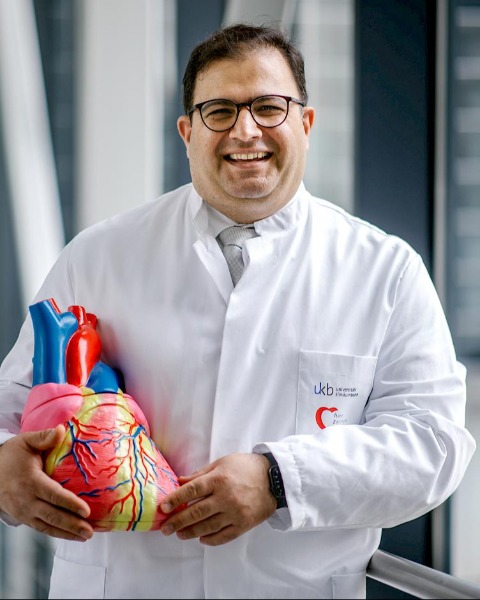Adult Cardiac
Category: Scientific Abstract: Oral/Poster
First experiences with Automated annular Suture Placement Device in Totally Endoscopic Aortic and Mitral Valve Replacement
S. Salamate1, A. El-Sayed Ahmad1, A. Bayram2, S. Sirat3, M. Silaschi4, . Akhavuz5, F. Bakhtiary6
1Cardiac Surgery University Hospital Bonn, Germany, Bonn, Nordrhein-Westfalen 2Cardiac Surgery Helios Klinikum Siegburg, Germany, Siegburg, Nordrhein-Westfalen 3Helios Klinik Siegburg, Siegburg, Nordrhein-Westfalen 4University Hospital Bonn, Bonn, Nordrhein-Westfalen 5Universitätsklinikum Bonn, Bonn, Nordrhein-Westfalen 6Bonn Heart Center, Bonn, Nordrhein-Westfalen
1Cardiac Surgery University Hospital Bonn, Germany, Bonn, Nordrhein-Westfalen 2Cardiac Surgery Helios Klinikum Siegburg, Germany, Siegburg, Nordrhein-Westfalen 3Helios Klinik Siegburg, Siegburg, Nordrhein-Westfalen 4University Hospital Bonn, Bonn, Nordrhein-Westfalen 5Universitätsklinikum Bonn, Bonn, Nordrhein-Westfalen 6Bonn Heart Center, Bonn, Nordrhein-Westfalen

Farhad Bakhtiary, MD PhD (he/him/his)
Bonn Heart Center
Bonn, Nordrhein-Westfalen, Germany
Presenting Author(s)
Disclosure(s):
Farhad Bakhtiary, MD PhD: No relevant disclosure to display
Purpose: In order to overcome some of the challenges of endoscopic minimally invasive valve surgery (EMIVS), an automated annular sutures placement device has been used. This study investigates early outcomes of patients who received aortic or mitral valve replacement with the help of the RAM® device as first experiences in EMIVS.
Methods: Between September 2020 and June 2023, 66 consecutive patients (mean age 61.8 ± 11 years, BMI 26.7 ± 4.7) underwent endoscopic minimally invasive aortic or mitral valve replacement through right anterior mini-thoracotomy (RAMT) at two cardiac surgery referral centers in Germany. The RAM® device (LSI Solutions®, Victor, NY, USA) was used in all Patients. 3.5 and 5.0 RAM® sizes were used in 11 (16.7%) and 55 (83.3%) patients, respectively. Aortic, Mitral, and double valve surgery was performed in 54 (81.8%), 10 (15.2%), and 1 (1.5%) patients, respectively. Arterial hypertension, diabetes mellitus and coronary artery disease represented in 57.6%, 15.2% and 43.9% of patients, respectively. Clinical data were prospectively entered into our institutional database.
Results: Cardiopulmonary bypass time and cross-clamping time were 97.9 ± 20.9 and 66 ± 15.7 minutes, respectively. Intensive care unit stay and hospital stay was 1 [1 – 2] and 9 [7 – 13] days, respectively. There was no paravalvular leak, and no other intraoperative complications were noted. Additionally, 30-day mortality and in-hospital mortality were zero. Conversion to sternotomy was noted in 1 (1.5%) patient due to bleeding.
Conclusion: The usage of the RAM® device is a safe, feasible and effective approach to the endoscopic implantation aortic or mitral valves and yield excellent early outcomes. Larger size studies are needed to evaluate efficacy and safety of RAM® device.
Identify the source of the funding for this research project: The author(s) received no financial support for the research, authorship, and/or publication of this article
